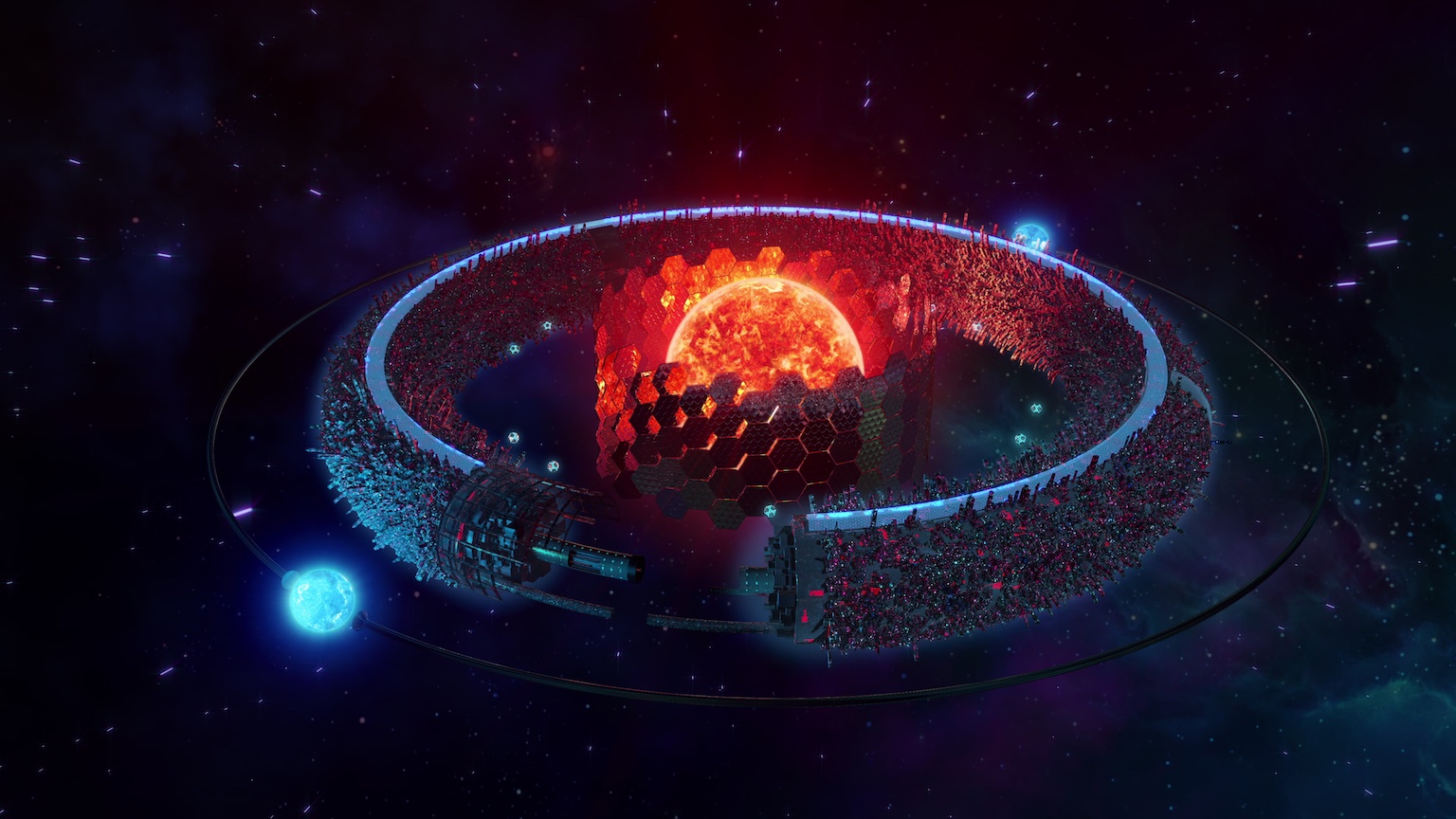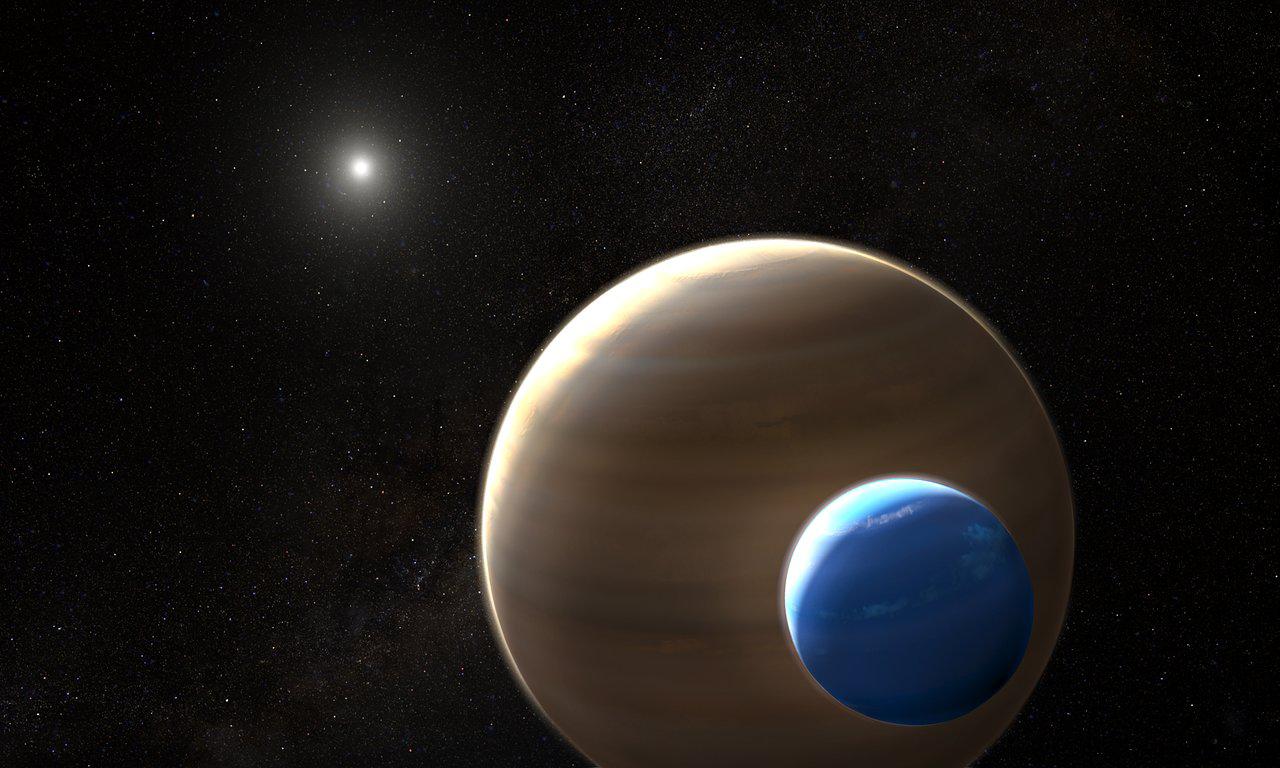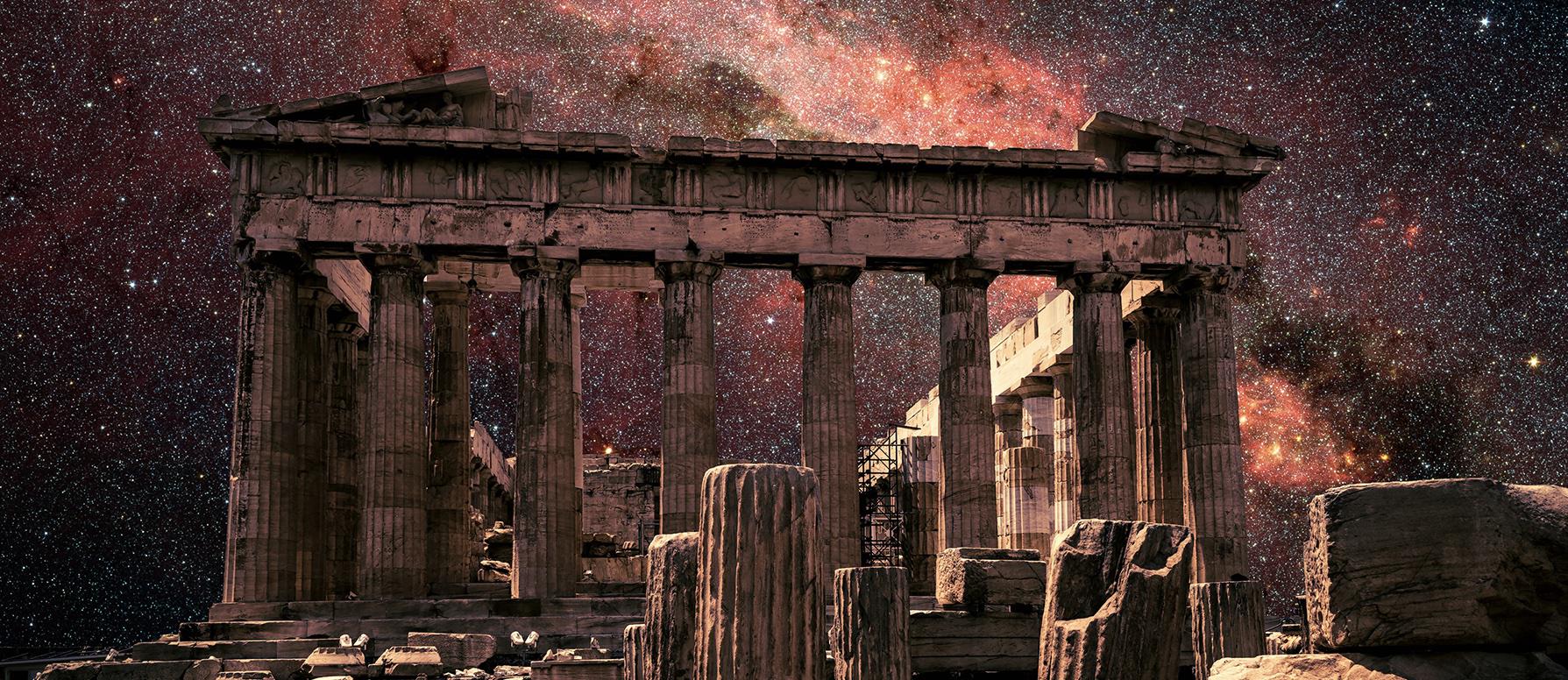Could aliens suck the energy from black holes with Dyson Spheres?

- A new paper combines two concepts from astrophysics: black holes and Dyson Spheres. The latter consist of vast, energy-collecting shells placed around a star to harvest its energy output.
- The paper contemplates a civilization capable of setting up a Dyson Sphere around a binary system that pairs a black hole with a star. A black hole Dyson Sphere would be the mark of a Type III civilization — one with the capacity to collect the energy equivalent of an entire galaxy.
- While this is the pure speculation, it is a great example of how astrophysics allows us to envision the limits of the possible.
What could be better than a super freaky idea from the edges of astrophysics? Try two super freaky ideas from the edges of astrophysics.
That is exactly what we get from a new paper that explores how an advanced civilization might build a Dyson Sphere around a black hole to extract titanic amounts of energy. Now, I realize that last sentence is pretty wild. Indeed, the paper, by T.Y. Hsiao and his collaborators from the Institute of Astronomy in Taiwan, brings us to the very edge of possibility itself. Let’s unpack things a bit.
Freaky idea #1: Dyson Spheres
We can start with the Dyson Sphere. This would be a vast shell of energy collectors placed around a star to harvest its entire light output. Freeman Dyson proposed the idea in the early 1960s. When Nikolai Kardashev later devised a scale for classifying advanced aliens based on their capacities to harvest energy, he used the Dyson Sphere as a signature of a Type II civilization. We now know that an actual sphere would be unstable; it would crash into the star. These days, astronomers talk instead about Dyson Swarms — dense arrays of orbiting energy collectors. A Dyson Swarm around the sun that harvested most of its energy would yield power measured in the trillions upon trillions of watts.
Freaky idea #2: black holes
Next come black holes, which are far more well known. Let’s describe them nevertheless. A black hole forms when a large enough collection of mass comes together in a small enough space. Under the right conditions, the matter’s self-gravity overwhelms everything else, leading it to collapse into what we call a singularity — where all the mass gathers in a single geometric point. (We need a theory of quantum gravity to really understand what happens at the singularity.) A black hole comprises this singularity and its event horizon, which is simply the black hole’s surface of no return. Anything that crosses the event horizon is lost forever from our Universe.
Merging the ideas
Okay, so we have our two super freaky ideas. The first describes vast, solar system-sized machines surrounding a star and built by a hyper-advanced civilization to harvest energy. The second outlines impossibly dense regions of space and time surrounded by boundaries that separate their interiors from the rest of the cosmos. Now let’s put them together in the same way Hsiao et al did.
The first question you are probably asking is, how can you get any energy out of a black hole? After all, don’t black holes swallow everything that falls into the event horizon, including light?
The answer is pretty simple.
While matter and energy that fall through the event horizon are lost, stuff that stays farther out can still radiate energy and escape. Hsiao and his team thought first about stellar-mass black holes that form a binary system with a normal star. In such pairings, the black hole pulls material away from the regular star. This material then forms a swirling disk of gas, known as an accretion disk, that spirals around the black hole and eventually passes through the event horizon. The accretion disk is pretty hot. It radiates a lot of energy. While the hot material stays beyond the singularity’s event horizon, it can emit energy that radiates away into space. Accretion disks also routinely produce high-energy beams, or “jets,” of plasma that rocket away from the disk and the Black Hole at velocities close to the speed of light.
Hsiao et al considered putting a Dyson Sphere around this kind of binary system. This obviously involves some pretty extreme astronomical engineering. Building a Dyson Sphere around any star requires very advanced capacities. You would probably have to ground up whole planets just to get the material you need. Building one in the extreme environment around a binary system with a black hole would be even harder, especially if you wanted to capture energy from the jets.
Dream big
But imagine indeed that you could build the black hole Dyson Sphere. It would produce far more energy than even a normal Dyson Sphere. The results depend on the assumptions put into the model, but this contraption could collect anywhere from hundreds to tens of thousands of times more energy. In this way, a single black hole Dyson Sphere could put the beings that built it on a path to becoming a Type III civilization — one with the capacity to collect the energy equivalent of an entire galaxy.
Now, all of this is obviously the purest of pure speculation. There may not even be any other civilizations out there, advanced or otherwise. And even if there are other civilizations, the technologies needed to create Dyson Spheres may be impossible. The cool thing, however, is how astrophysics lets you envision what might be possible. If we want to dream, we might as well dream big.





